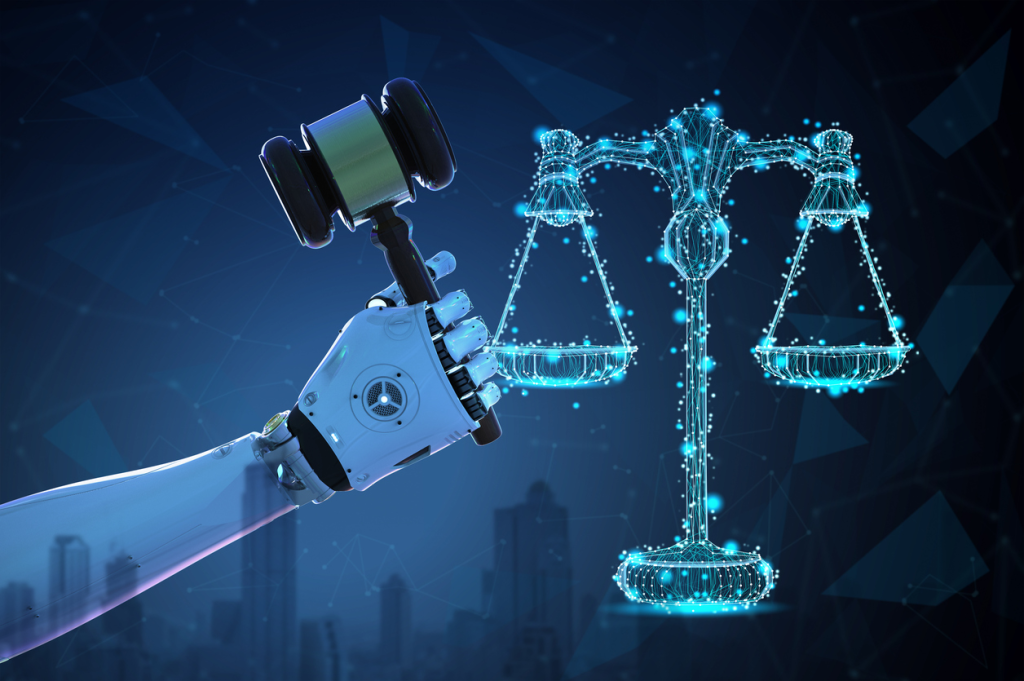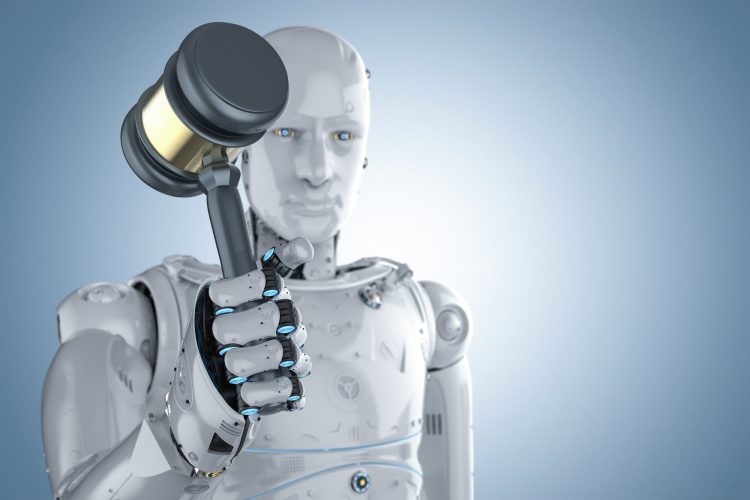Introduction
As robotics technology continues to evolve, it is no longer just a matter of creating machines that can perform complex tasks autonomously. With advancements in artificial intelligence (AI), machine learning, and robotics, the roles of robots in everyday life are expanding beyond industrial automation to include healthcare, transportation, education, and even personal assistance. These developments bring about a host of new ethical, legal, and societal questions that demand careful consideration and resolution.
While robots offer numerous benefits in terms of efficiency, productivity, and the ability to perform tasks that are too dangerous, mundane, or complex for humans, they also present unique challenges. How should robots be regulated? What ethical standards should guide their use? How will robots affect the workforce and the economy? These questions and more are critical for researchers, policymakers, and society to address as robotics continues to transform industries and societies.
Ethical Issues in Robotics
Ethics is one of the most debated and complex aspects of robotics. As robots become increasingly autonomous and capable of making decisions, questions arise about their role in society and how they should behave. Key ethical concerns include:
1. Autonomy and Decision-Making
One of the primary ethical concerns about robots is their autonomy—the ability to make decisions without human intervention. Autonomous robots, especially those operating in high-stakes environments such as healthcare or military applications, must be designed with clear ethical guidelines to prevent harm. For example:
- Healthcare Robots: In medical settings, robots are increasingly being used for surgeries, patient care, and rehabilitation. How should a robot make decisions about treatment? Should it prioritize a patient’s life over the cost of a procedure? How can we ensure that the robot’s decisions align with medical ethics and the values of the healthcare system?
- Autonomous Vehicles: Self-driving cars present a classic ethical dilemma: what should the car do if faced with an unavoidable accident? Should it prioritize the safety of its passengers, pedestrians, or other road users? The “trolley problem,” a thought experiment in ethics, highlights the moral complexities of programming decision-making for autonomous systems.
To address these ethical concerns, researchers are developing frameworks for ethical decision-making in autonomous robots. One approach is value-sensitive design, which involves embedding ethical principles into the design process, ensuring that robots adhere to established societal values and norms.
2. Accountability and Responsibility
When robots act autonomously, determining accountability becomes problematic. If a robot causes harm—whether in an accident, by malfunctioning, or through poor decision-making—who is responsible? Is it the robot itself, the manufacturer, the programmer, or the owner?
In the case of autonomous vehicles, for instance, if a self-driving car causes an accident, should the manufacturer be held liable? Or should the responsibility fall on the vehicle’s software developer, the owner, or the operator who failed to intervene?
The issue of accountability is crucial in developing legal frameworks for robotics. Liability laws need to evolve to address the unique challenges posed by autonomous systems. One possible solution is to create new categories of legal responsibility for robots and their operators, ensuring that there is clarity regarding who is at fault in case of accidents or harm.
3. Bias and Fairness
Another key ethical issue in robotics is the potential for bias in AI systems that govern robot behavior. AI algorithms, including those used in robot perception and decision-making, can inadvertently perpetuate biases that exist in the data used to train them. For example:
- Bias in Hiring Algorithms: Robots used in recruitment processes may make biased decisions based on race, gender, or other factors, if the training data includes biased historical decisions.
- Bias in Law Enforcement Robots: Robots used in law enforcement, such as facial recognition systems, may disproportionately target certain demographic groups due to biases in the training data.
Researchers and ethicists are working to address this issue through algorithmic fairness and bias detection. This involves creating transparent AI systems that can be audited for bias, and designing algorithms that are trained on diverse, representative datasets to ensure that robots treat all individuals fairly.
Legal Issues in Robotics
As robots become more integrated into society, legal systems must adapt to the challenges and opportunities they present. Key legal issues in robotics include:
1. Regulation and Safety Standards
Currently, there is no universal set of laws or regulations governing the development, deployment, and use of robots. This has led to discrepancies in safety standards across different industries and regions. For example, industrial robots are subject to strict safety regulations in some countries but may not be in others.
To address this, international bodies such as the International Organization for Standardization (ISO) and IEEE are working on establishing global standards for robotics. These standards cover safety protocols, operational guidelines, and ethical considerations in robot design and deployment. By creating universal safety standards, the risks associated with robotic failure or malfunctions can be minimized.
2. Intellectual Property and Ownership
The rise of advanced robotics also brings challenges in the area of intellectual property (IP). Who owns the creations or innovations made by robots? Should robots be credited as inventors? For example:
- Patents: If a robot creates a new invention or writes a patentable algorithm, who owns the patent? The robot itself? The human operator or programmer? Or the company that created the robot?
- Copyright: If a robot generates artwork, music, or written content, who holds the copyright? The robot, its creator, or the company that owns the robot?
These questions are challenging because traditional legal frameworks were designed for human inventors and creators. One potential solution is to establish new laws that specifically address the ownership and IP rights of robots and their creators.
3. Privacy Concerns
As robots, particularly service robots, become more prevalent in homes and public spaces, concerns about privacy are rising. Many robots collect data about their users—whether it’s through cameras, microphones, or sensors. This data may include sensitive personal information, such as daily routines, conversations, and biometric data.
For example, a robot vacuum that maps out the layout of a house could inadvertently collect information about the homeowner’s schedule or lifestyle. Similarly, personal assistants like Alexa or Siri store personal data that could be misused if the robot is hacked or exploited.
Legal protections such as the General Data Protection Regulation (GDPR) in the European Union aim to safeguard individuals’ privacy in the context of AI and robotics. However, as robots continue to collect more data, additional measures will be necessary to ensure that individuals’ privacy is respected and that data is used responsibly.

Societal Impacts of Robotics
The widespread deployment of robots is not just a technological issue—it’s also a social one. Robotics has the potential to transform every aspect of society, from employment and education to relationships and ethics.
1. Impact on Employment and the Workforce
One of the most discussed societal implications of robotics is the impact on jobs. As robots become more capable, many routine tasks performed by humans—such as manufacturing, customer service, and logistics—could be automated. This leads to concerns about widespread job displacement.
However, robots also have the potential to create new types of jobs. For example, demand for AI and robotics experts is growing, and as robots take over mundane tasks, humans may be freed up to engage in more creative and strategic work. Policymakers and businesses will need to address this transition by investing in retraining programs and supporting displaced workers through social safety nets.
2. Social Isolation and Human Interaction
As robots become more integrated into daily life, there is a concern that they may contribute to social isolation, especially in settings like elderly care. Robots designed to care for the elderly or provide companionship may lead to reduced human interaction, potentially causing psychological or emotional harm.
While robots can help alleviate the burden on caregivers and provide companionship, they should not replace genuine human connection. It is crucial to find a balance between robotic assistance and maintaining social bonds. Ethical guidelines and research into the social impact of robots can help strike this balance.
3. Robot Rights and Personhood
As robots become more autonomous and intelligent, the question of their rights becomes more pertinent. Should highly intelligent robots be granted some form of legal status or personhood? Could they be considered “legal persons” under the law, especially if they can demonstrate self-awareness or advanced cognitive capabilities?
While this concept may seem far-fetched, it is becoming an increasingly relevant topic in the discussion of AI and robotics. Some argue that intelligent robots should have certain protections and rights, while others believe that personhood should be reserved for humans and certain animals. As robots evolve, this ethical and legal issue will require serious consideration.
Solutions and Future Directions
To address the ethical, legal, and societal challenges posed by robotics, several steps can be taken:
- Developing Comprehensive Ethical Frameworks: Policymakers, ethicists, and technologists must collaborate to develop comprehensive ethical frameworks that govern robot behavior, decision-making, and interactions with humans.
- Creating Robust Legal Regulations: Governments must create new laws and regulations that specifically address robotics. This includes ensuring safety standards, protecting privacy, and determining liability in the event of harm caused by robots.
- Investing in Education and Workforce Transition: As robots replace some jobs, it’s essential to provide workers with new skills through education and retraining programs. This will help mitigate the impact of automation on employment.
- Public Engagement and Dialogue: It is crucial to engage the public in discussions about the future of robotics, ensuring that societal values and priorities are reflected in the development and deployment of robots.
Conclusion
As robotics technology continues to advance, so too must our understanding of the ethical, legal, and societal issues it raises. Researchers, policymakers, and society as a whole must work together to address these challenges to ensure that robots are developed and deployed in ways that benefit humanity. By establishing ethical guidelines, legal frameworks, and social safeguards, we can navigate the complex landscape of robotics and ensure that these powerful technologies are used responsibly, ethically, and for the greater good of society.











































